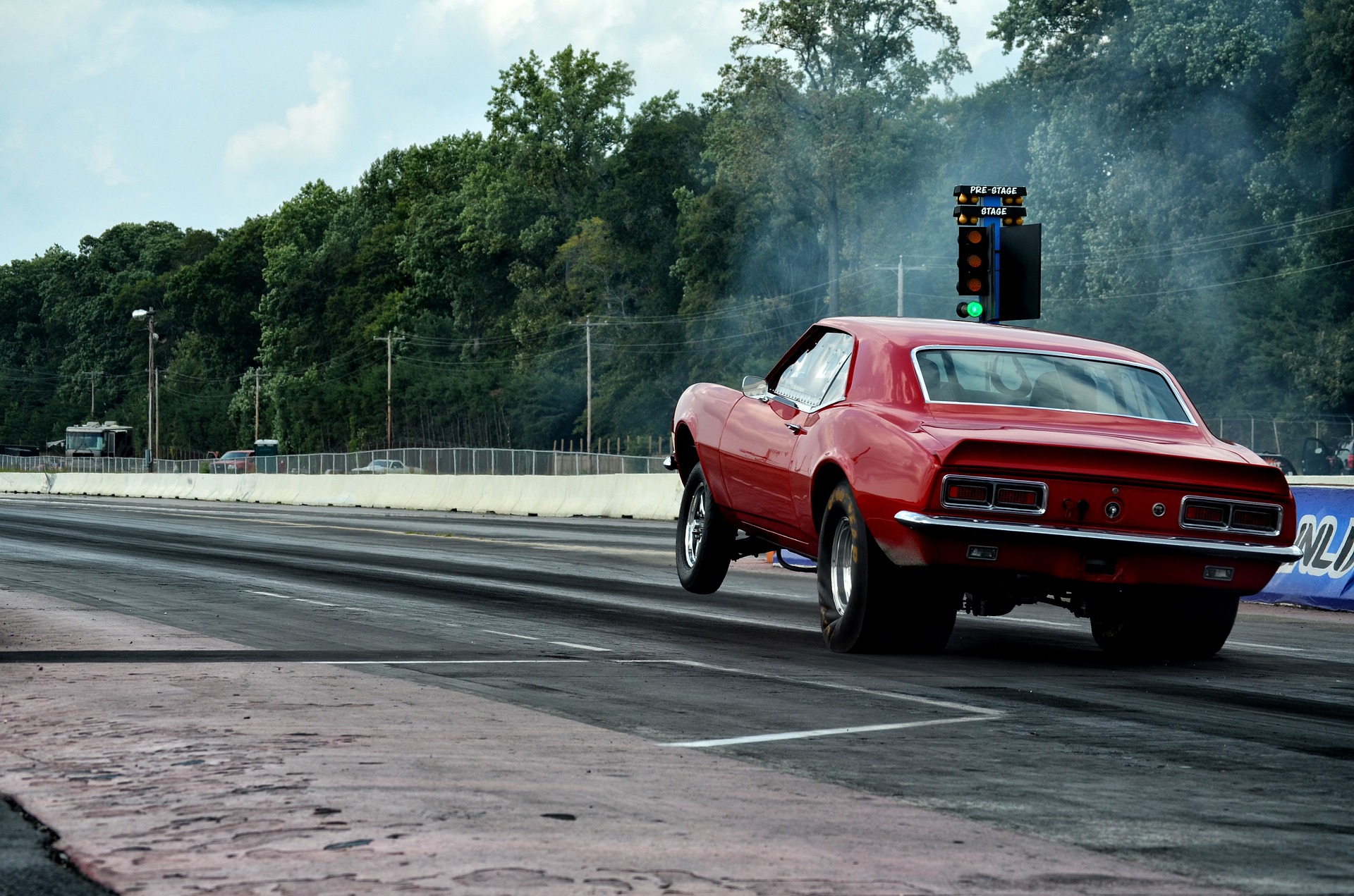Muscle cars were all about power, performance, intimidating looks, super-charged engines, and anything else you can think of that invokes “muscle,” only in a motor vehicle.
Here’s a look at five truly notable muscle cars from their heyday in the 1970s.
- ‘ 70-’71 Plymouth ‘Cuda Coupe/Convertible
“1970 was the year that the ‘Cuda truly became a legendary muscle car in its own right.”
How is it muscle?
The performance part of these Barracudas is what makes them muscle. Featuring a variety of options for more robust and powerful engines, if muscle is what you were after in 1970-71, muscle is what you got. The sleek look didn’t hurt, either.
What did it bring new to the table stylistically?
The Barracuda was altered a bit for 1971. Additions included new taillights and front grille, and trim variations. The year was also the only one that saw the model with four headlights.
A few key style introductions for the 1970-71 Plymouth Barracuda also made it pop:
- Shaker hood option
- Rubber colored bumpers
- Spicer-built Dana 60 rear axles
What performance options did it boast?
The new Barracuda model had a major muscle selling point in that it was both wider and lower and beat out previous models in terms of power. The 1970 ‘Cuda came with an optional 426 Hemi engine, which could boost the vehicle up to an impressive 425 horsepower (hp).
How did it stack up price-wise?
The Plymouth Barracuda base hardtop coupe model cost $2,764, and the convertible model came in at a cost of $3,034 in 1970.
- ’70 AMC AMX
“We made the AMX look tougher this year because it’s tougher this year,” read advertisements for the 1970 edition of American Motors’ two-seat sports car.
How is it muscle?
The 1970 AMC AMX just looks muscular. From a visual standpoint, it seems like it is perched on haunches, ready to pounce right onto the road and speed away. Its weight was about 3,126 pounds, making it the heaviest AMX available at its release. However, the margin by which it was heaviest was only 29 pounds, so the increased weight on the car’s performance was negligible. It was also the rarest (around 4,116 production units) of the model’s three two-seat editions.
What did it bring new to the table stylistically?
With brand-new rear lamps, a retooled front end including a grille flush with the hood, and a redesigned bumper with “mutant square” parking lamps, the 1970 AMC AMX ramped up style standards for muscle cars of that era.
AMX lettering was conspicuously placed between the second and third moldings, making it stand out considerably.
Other style features include circular rally lights on the grille, an air scoop system for front brake cooling, and a restructured hood with a large ram-induction scoop to cool the engine.
Drivers found contoured high-back bucket seats inside the cockpit with integral head restraints and a revamped instrument panel. An exclusive Corning safety windshield was an option. Altogether, the 1970 AMC AMX was one of the most stylish muscle cars of the decade.
What performance options did it boast?
- AMX 390 cubic inch displacement (cid) V-8 engine with 325 hp
- Close-ratio four-speed manual transmission
- Power front disc brakes
- F70-14 raised white-letter tires
- A handling package
How did it stack up price-wise?
This model listed for $3,395 in ads at the time, an amount similar to a souped-up Ford Mustang or Chevy Camaro.
- ’77 Pontiac Firebird Trans Am Special Edition
How is it muscle?
For 1977, the Pontiac Trans Am could again be ordered with an extra-cost package called the Special Edition rather than Limited Edition. But the mere fact the model in question carried the moniker “Firebird” makes it a bona fide muscle car.
What did it bring new to the table stylistically?
This model was initially manufactured in both coupe and T-top versions. It also included these style enhancements:
- Custom gold body decals
- Gold snowflake wheels
- Gold-trimmed exterior appointments
- Gold formula steering wheel with gold spokes
- Gold faux plating trimmed instrument panel, console, and door panels
What performance options did it boast?
1977 was not a banner year for performance options. Still, the 1977 Pontiac Firebird Trans Am Special Edition managed to project that sexy sports-racing car image that had made the model popular in earlier years.
The following performance options came standard on the 1977 model:
- Federally required anti-theft features
- Emissions control
- 6.6-liter 400-cid in most states (In California, 403-cid)
- Standard V-8 engine
How did it stack up price-wise?
The base price for the model began at just over $6,000. The “Bandit” package, so called due to the model’s feature film appearance in the classic Smokey and the Bandit,cost $556.00 without T-tops and $1,141.00 with, on top of the base price. These numbers make it one of the most expensive muscle cars on this list.
- ’73 AMC Hornet X Hatchback
“The Styling Coup of 1973”
— Car & Driver
How is it muscle?
Due to the 1973-1974 oil embargo, demand for muscle cars dropped by 1973. But the Hornet still earned praise. The 1973 Hornet Hatchback is also notable because it was one of the only compact muscle cars available at the time. In terms of performance, speed, and power, it brought true muscle in a small, yet dynamic package.
What did it bring new to the table stylistically?
The 1973 AMC Hornet Hatchback came with many new style adaptations:
- New nose design and bodywork
- V-shaped grille
- Lower, longer hood
- Longer peaked front fenders
- Levi’s bucket seat interior trim option made of nylon instead of cotton, which was intended to reduce flammability and improve durability
- Optional accessory to make the open hatchback into a tent camper, complete with mosquito net windows
- Overall length increase of 6 inches
What performance options did it boast?
The 1973 AMC Hornet X Hatchback featured a more prominent, tougher front bumper that was also energy-absorbing. The new bumper included a flat rubber strip to meet the National Highway Transportation Safety Administration (NHTSA) safety standard of “no damage at 5 miles per hour.”
At the rear, the back bumper got duo vertical rubber guards and could withstand rear-end collisions of up to 2.5 miles per hour with no damage. The model also carried an option for the rear bumper to match the front bumper damage standards.
Other performance enhancements include an option for a hinged floor with a concealed space for storage big enough for a spare tire. This feature increased the flat load area to 23 cubic feet.
How did it stack up price-wise?
The hatchback Hornet X option was considered one of the most affordable muscle car options that came out that year, with an original list price of $2,449.
- ’78 Dodge Li’l Red Express Truck
How is it muscle?
This muscle truck had a 255 hp capability via a 360 cubic inch V-8 engine coupled with a rear-wheel-drive option.
What did it bring new to the table stylistically?
The biggest benefit that this vehicle offered stylistically is that it brought the muscle car world to those who prefer trucks.
Additional standout style features of this model included:
- Heavy-duty main bearings
- Vertical 2-11/44-inch tailpipes surrounded by chrome heat shields
- Low, round taillights and backup lights rather than a rear bumper
- 9.25″ rear differential with 3.55 gears
- Double-roller timing chain
- W-2 cylinder heads fitted with 1.5:1 ratio bronzed rocker arms
What performance options did it boast?
- A fuel-injected 360 V-8 engine starting point
- Holley induction system (4160 Series carb and aluminum intake)
- Heavy-duty valve springs and dampers
- 252/252-degree camshaft
- 8.4:1 compression, and the full tilt of E58 internals
- Forced air induction
How did it stack up price-wise?
The MSRP plus destination charge (always part of a new vehicle’s sticker price) came to almost $7,000 in June 1978 when this model was released, making it the most expensive vehicle on this list.

